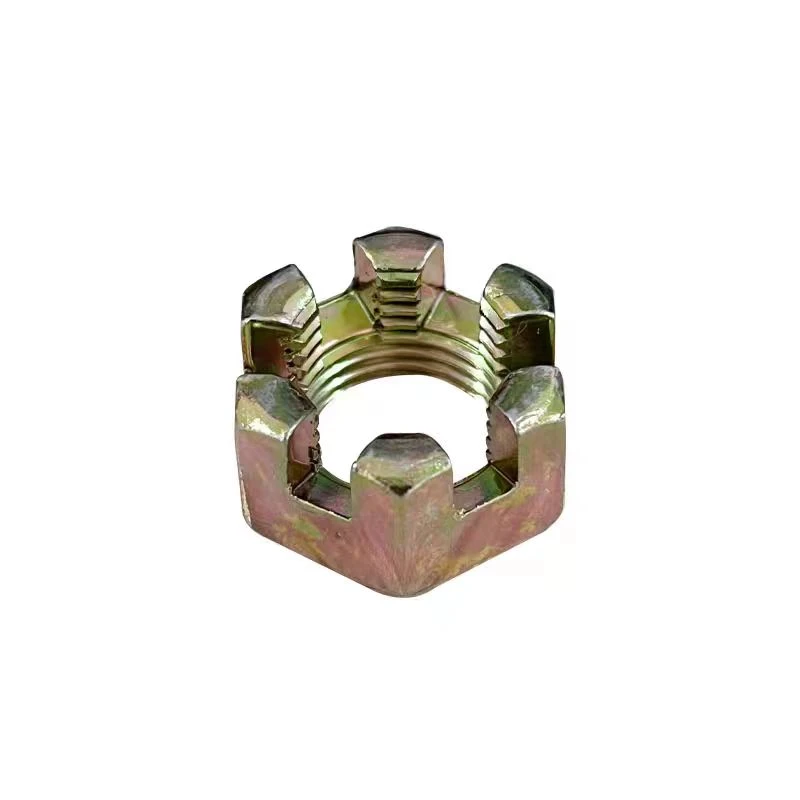

m22 bolt
Dec . 12, 2024 13:54 Back to list
m22 bolt
Understanding M22 Bolt Specifications, Applications, and Advantages
Bolts are essential components in various engineering and construction applications. Among the multitude of bolts available, the M22 bolt stands out due to its unique specifications and versatile applications. This article will delve into the details about the M22 bolt, its characteristics, and its importance in different industries.
Specifications of the M22 Bolt
The designation M22 refers to the metric thread size of the bolt. The M indicates that it is a metric bolt, while 22 denotes the nominal diameter, which is 22 millimeters. M22 bolts typically feature a coarse thread, which is standard for most metric bolts, allowing them to provide a strong grip and facilitate easier assembly.
Typically, M22 bolts are made from various materials, including carbon steel, stainless steel, and alloy steel. The choice of material significantly influences the strength, corrosion resistance, and durability of the bolt. For example, stainless steel M22 bolts are ideal for applications in corrosive environments due to their resistance to rust and oxidation, whereas carbon steel bolts are often used in situations where strength is a primary concern.
Class and Strength
M22 bolts are categorized into different grades based on their tensile strength, which is critical for determining their load-bearing capacity. Common grades for M22 bolts include 8.8 and 10.9, which indicate their mechanical properties. Class 8.8 is a high-strength bolt made from medium carbon steel that has been quenched and tempered, providing excellent tensile strength and ductility. Class 10.9 is even stronger and often used in heavy machinery and automotive applications due to its superior mechanical properties.
Applications of M22 Bolts
m22 bolt

The M22 bolt is widely used across various sectors, including construction, automotive, machinery, and infrastructure. One of its primary applications is in heavy machinery, where robust connections are essential for safety and efficiency. Due to their high strength, M22 bolts are often employed in securing components in vehicles, including engines, frames, and suspension systems.
In construction, M22 bolts play a crucial role in assembling structural components. They are used in conjunction with nuts and washers to create reliable connections in steel structures, bridges, and buildings, ensuring stability and safety. The use of M22 bolts in such applications is essential, as they help distribute loads evenly and resist the forces that can lead to structural failure.
Advantages of M22 Bolts
One of the key advantages of M22 bolts is their high load-bearing capacity. With their robust design and materials, they can withstand significant forces without deforming or breaking. This property is crucial in applications where safety and durability are paramount.
Additionally, the availability of M22 bolts in various materials and grades allows for flexibility in design and application. Engineers can select the appropriate bolt based on the specific requirements of the project, such as environmental conditions and load specifications.
Furthermore, M22 bolts are designed for ease of use. Their standardized dimensions mean they can be readily sourced and replaced, which minimizes downtime in machinery and construction projects. This is particularly important in industries where time is a critical factor.
Conclusion
In conclusion, the M22 bolt is a vital component in many engineering and construction applications, thanks to its robust specifications and versatility. Understanding the characteristics, applications, and advantages of M22 bolts is essential for engineers and professionals in the industry. By selecting the right type of M22 bolt for specific applications, one can ensure the safety, reliability, and efficiency of various structures and machinery. As technology and materials continue to evolve, the M22 bolt will likely remain a cornerstone in the world of fasteners, adapting to meet the demands of modern engineering challenges.
Latest news
-
High-Strength Hot Dip Galvanized Bolts - Hebei Longze | Corrosion Resistance, Customization
NewsJul.30,2025
-
Hot Dip Galvanized Bolts-Hebei Longze|Corrosion Resistance&High Strength
NewsJul.30,2025
-
High-Strength Hot-Dip Galvanized Bolts-Hebei Longze|Corrosion Resistance&High Strength
NewsJul.30,2025
-
Hot Dip Galvanized Bolts-Hebei Longze|Corrosion Resistance&High Strength
NewsJul.30,2025
-
Hot Dip Galvanized Bolts - Hebei Longze | Corrosion Resistance, High Strength
NewsJul.30,2025
-
High-Strength Hot Dip Galvanized Bolts-Hebei Longze|Corrosion Resistance, Grade 8.8
NewsJul.30,2025

